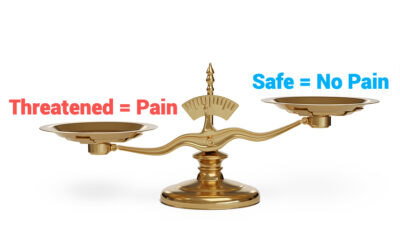Chiropractic and Posture Therapy share the same goal, healing musculoskeletal pain through skeletal alignment. Clients often ask me if they should be seeing a chiropractor while doing posture therapy. I work closely with a chiropractor on many client cases, and we find that the collaborative approach works well. This article, co-written with chiropractor Nancy Savioa, DC outlines how these modalities are complementary.
Nancy explains that chiropractic uses high velocity/low force manipulations to the joints, both spinal and extremities, in order to restore range of motion in the particular joint. When joints are not moving properly, and the muscles do not respond appropriately, this can lead to bio-mechanical dysfunction, which leads to compensations and pain.
When dysfunctional, the musculoskeletal system can no longer perform the everyday movements for which it is created so other muscles and joints take over. Thus, you are able to keep doing what you want although with lowered efficiency and at the cost of additional breakdown of your body. By restoring joint mobility though chiropractic manipulations, the nerves in the joints and surrounding muscles begin to fire more appropriately, which allows for adequate function. Nerves tell the muscles what to do and muscles tell the bones what to do.
The pelvis and spine are foundational to proper posture. The reason for spinal manipulation by a chiropractor is that the tiny muscles that move each of the spinal vertebra are not under conscious control. In other words, if a person has a ‘stiff neck’, that person can not simply move a neck vertebra (C6, for instance) by thinking of moving that segment to get relief. The brain won’t volitionally tell the spinal muscles to move. When the joint doesn’t move, the tiny spinal muscles quit doing their job and become dysfunctional (think of having your arm in a cast…the muscles around the elbow start to atrophy due to lack of use). Since the brain does not tell those tiny spinal muscles to move, a chiropractor performs the adjustment to the joint, which allows some movement and usually brings relief.
Once the bones have been repositioned by the chiropractor the key is to keep them there. Going back to your normal routine, using the same compensated movement patterns will likely return your bones to their painful, unbalanced position. Proper postural mobilization and stabilization exercises keep the muscles around joints moving appropriately, allowing nerve input that will keep your body functioning at your optimum level.
Attaining a balanced body requires moving bones into their proper position and stabilizing them there though soft tissue stretching and strengthening exercises. This is achieved though the combination of chiropractic manipulation and daily posture therapy exercises.
Keep your joints and muscles moving to stay pain free!



